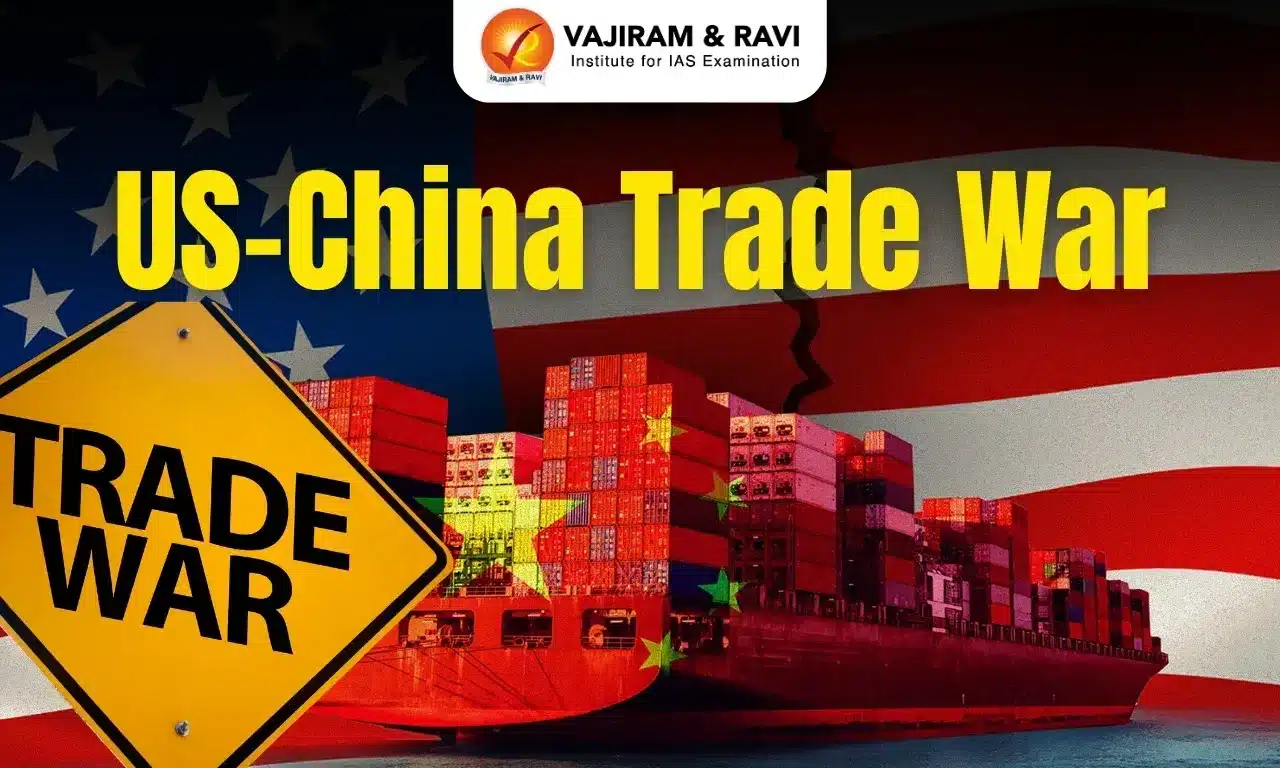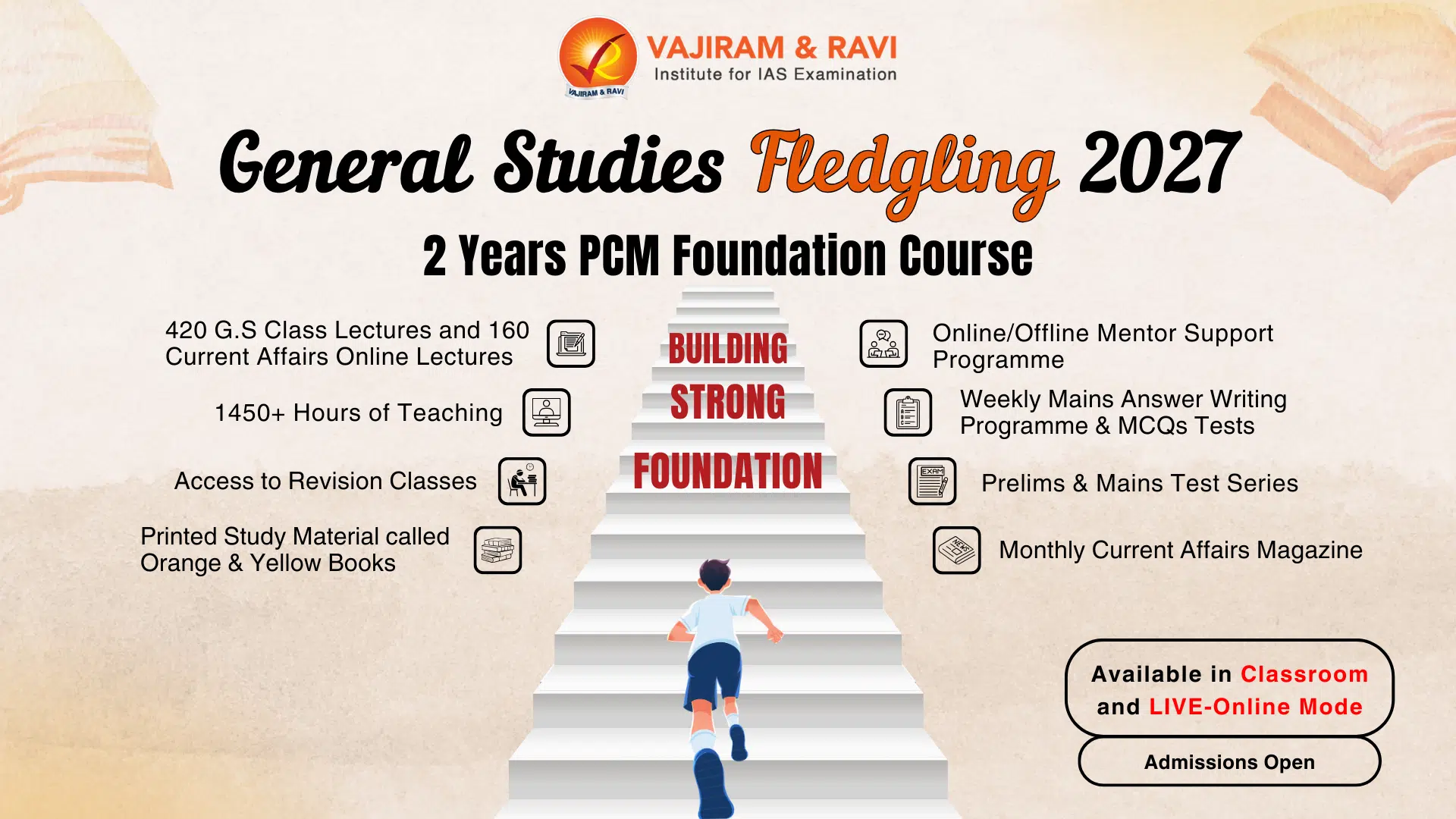What’s in Today’s article?
- US-China Trade War Latest News
- Trump’s Trade War with China during his First Term
- US tariffs on Chinese goods and possible benefits to India
- Impact of Trump’s Tariffs
- US-China Trade War FAQs
US-China Trade War Latest News
- US President Donald Trump delayed the imposition of 25% tariffs on Mexico and Canada just hours before they were set to take effect, pausing the North American trade war for a month.
- However, tensions with China escalated as Beijing retaliated against US tariffs by investigating Google for antitrust violations and imposing new tariffs on US coal, LNG, oil, and agricultural equipment.
- Trump also hinted at upcoming tariffs on the EU, citing trade imbalances. Businesses are preparing for potential disruptions, while the EU’s role as a major trading partner, including for India, raises concerns about a broader global trade conflict.
Trump’s Trade War with China during his First Term
- During his first term, US President Donald Trump initiated a trade war with China, resulting in retaliatory tariffs and countermeasures.
- This eventually led to the Phase One Deal on January 15, 2020, which aimed at structural reforms and increased purchases by China.
- However, subsequent analyses revealed that China neither met its purchase commitments nor implemented structural reforms.
US tariffs on Chinese goods and possible benefits to India
- The US tariffs on Chinese goods created opportunities for other countries, including India, to increase their exports to the US.
- A study by Oxford Economics found that India was the fourth-largest beneficiary of trade diversions between 2017 and 2023, following Trump’s tariff measures.
- The electronics sector saw significant gains, with India’s share in US imports rising tenfold since 2017, driven largely by telecommunications equipment like iPhones.
- With the current 10% tariff on Chinese goods, Indian exporters see further potential to expand their market share in the US.
- Indian exporters are receiving higher orders due to fears of increased tariffs on China, similar to what happened during the previous trade war.
India’s Competitiveness Challenges
- Despite gains, India lags behind other Asian nations in high-tech manufacturing.
- Korea and Taiwan dominate semiconductors, while China still supplies 27% of US electronics imports.
India’s Strategy to Attract Trade
- To benefit from trade shifts, India cut customs duties on key imports in the Union Budget to streamline tariffs.
- This move signals India's commitment to simplifying its tariff structure.
Impact of Trump’s Tariffs
- Trump’s tariffs on Canada, Mexico, and China would increase costs for American consumers, with an estimated annual burden of over $1,200 per household.
- US producers facing tariffed imports are expected to raise their prices, further fueling inflation.
US Inflation and Its Effect on Indian Exports
- High inflation in the US and Europe has already impacted Indian exports, particularly in labour-intensive sectors like gems, jewellery, and textiles.
- Rising costs and supply chain disruptions could further weaken demand for Indian goods.
Tax Policy and Economic Burden
- Higher tariffs, coupled with potential recessionary impacts, could lead to a net tax increase for most US households.
On the competitiveness of US manufacturers
- Economists explained that Trump’s 25% tariffs on Mexican and Canadian imports have weakened the competitiveness of US manufacturers, giving an advantage to rivals in Europe and Asia.
Impact on the US Auto Industry
- American cars rely on parts from the US, Canada, and Mexico, making tariffs on these countries increase production costs.
- As a result, US-made cars become more expensive, leading buyers to prefer imports from Japan, Germany, and Korea, which are not subject to tariffs.
Risk of Further Escalation
- Experts predicted that if US consumers shift towards cheaper foreign cars, Trump may see it as unfair competition and respond by either:
- Imposing a blanket 25% tariff on all imported cars
- Negotiating export restrictions with Japan, Germany, and Korea
- This retaliatory cycle could further escalate the global trade war, affecting multiple industries and economies.
US-China Trade War FAQs
Q1. What is the trade war between the U.S. and China?
Ans. It refers to mutual tariff hikes between the US and China, beginning in 2018, impacting global trade and supply chains.
Q2. Are tariffs good or bad?
Ans. Tariffs protect domestic industries but increase consumer costs, disrupt supply chains, and can escalate into broader economic conflicts.
Q3. Does China have tariffs on US goods?
Ans. Yes, China imposes tariffs on US imports, including agricultural products, energy resources, and high-tech equipment, as countermeasures.
Q4. What do you mean by trade war?
Ans. A trade war occurs when countries impose tariffs or restrictions on each other's imports to gain economic or political advantage.
Q5. What is the meaning of trade?
Ans. Trade is the exchange of goods and services between individuals, businesses, or countries to promote economic growth and cooperation.







